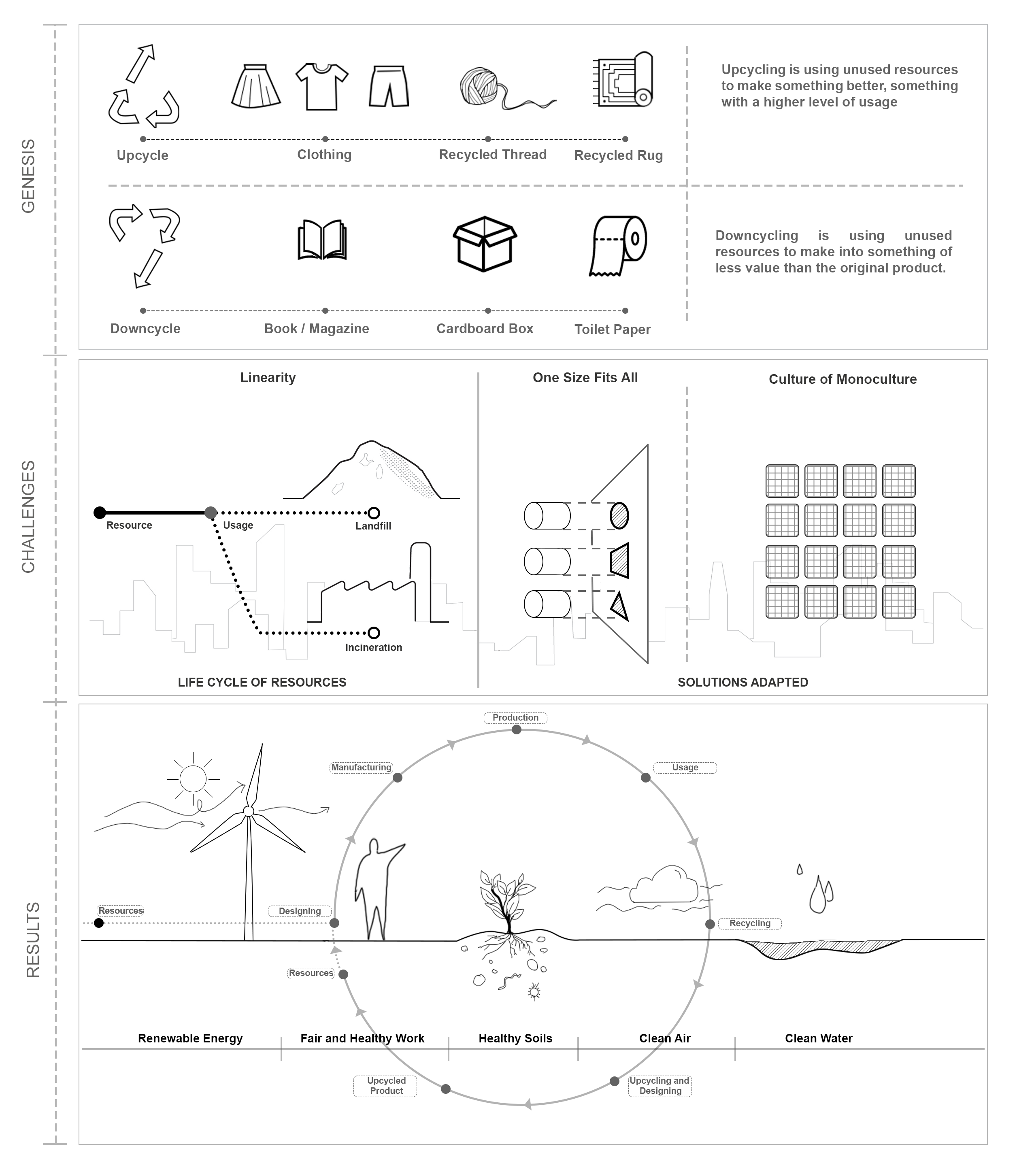Authors : William McDonough (Architect) – “Design is a Signal of the Intention.” & Michael Braungart (Chemist) – “Nature does not have a design problem.”
In 1995, they established McDonough Braungart Design Chemistry, a product and system development firm assisting clients in implementing sustaining design protocol.
The framework details how to execute their Cradle to Cradle Design approach. It demands a fundamental shift in industry, moving away from the cradle-to-grave model towards the cradle-to-cradle model. It implies that more alterations are required because the “reduce, reuse, recycle” strategies continue to support this cradle-to-grave methodology. The book promotes the creation of products with the intention of upcycling rather than discouraging downcycling. It proposes a design paradigm based on three nature-derived principles:
01. Everything is a resource for something else.
In nature, one system’s “waste” produces nourishment for another. Everything can be deconstructed and safely returned to the soil as biological nutrients, or re-utilized as high-quality ingredients for new products as technological nutrients.
02. Use clean and renewable energy.
Living things thrive on the energy of current solar income. Similarly, human constructs can utilize clean and renewable energy in many forms—such as solar, wind, geothermal, gravitational energy and other energy systems being developed today—thereby capitalizing on these abundant resources while supporting human and environmental health.
03. Celebrate diversity.
Around the world, geology, hydrology, photosynthesis and nutrient cycling, adapted to locale, yield an astonishing diversity of natural and cultural life. Designs that respond to the challenges and opportunities offered by each place fit elegantly and effectively into their own niches.
“The world will not evolve past its current state of crisis by using the same thinking that created the situation” – Albert Einstein

“As long as human beings are regarded as ‘bad,’ zero is a good goal. But to be less bad is to accept things as they are, to believe that poorly designed, dishonorable, destructive systems are the best humans can do. This is the ultimate failure of the ‘Be less bad’ approach : a failure of the imagination.

